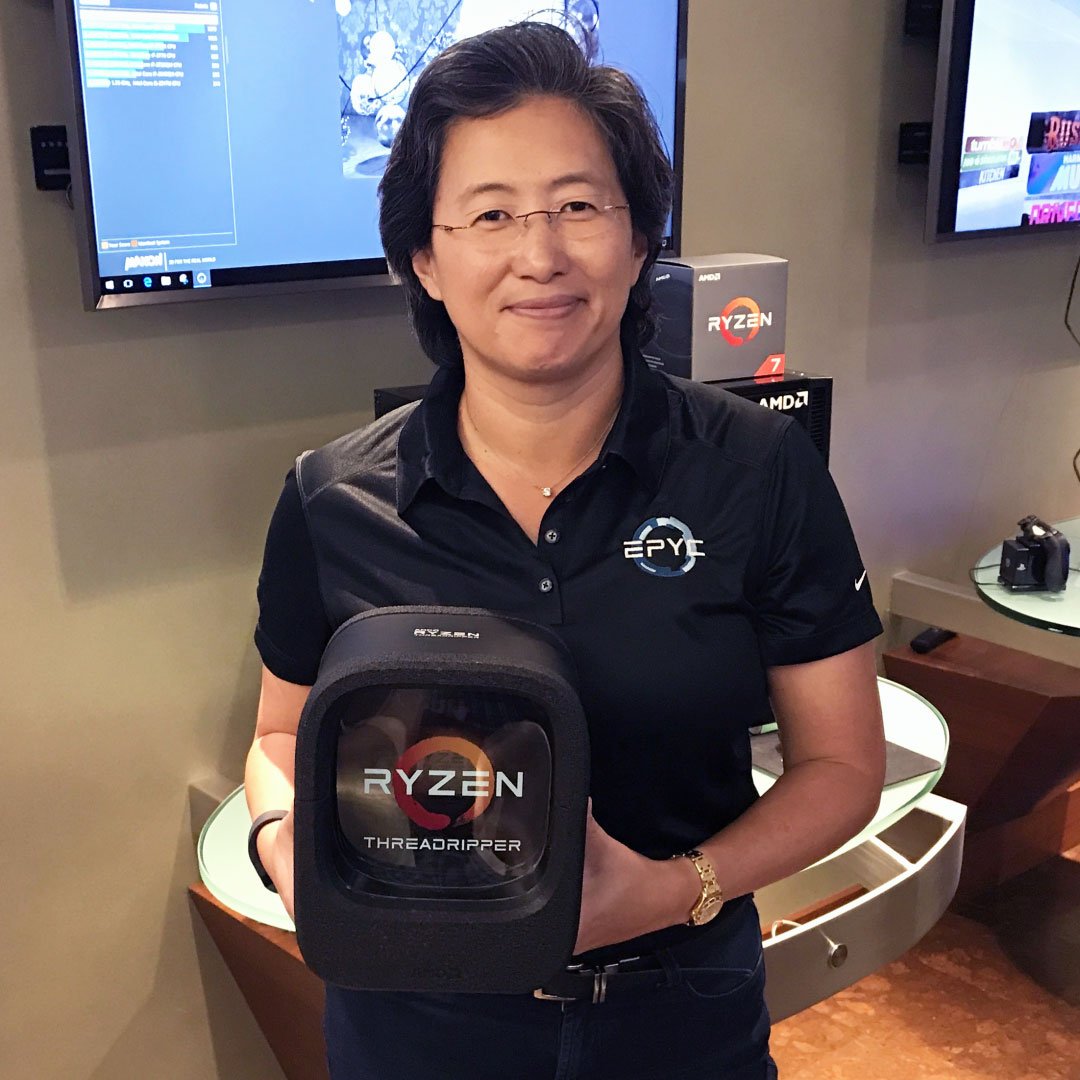The Ryzen Threadripper box is bigger than a mini-ITX PC
AMD's CEO teases the upcoming Vega and Threadripper launch.

There are a few things we know about AMD's Ryzen Threadripper now. First, it will be previewed at SIGGRAPH 2017 at the end of the month, along with AMD's RX Vega cards. Second, Threadripper will come in two models initially, the 12-core/24-thread 1920X priced at $799, and a 16-core/32-thread 1950X priced at $999. And now, thanks to Lisa Su, we know what the shipping box looks like.
I've mentioned before that the Threadripper package is huge, and it will require a new form factor for coolers. The super-size-me approach apparently extends to the box as well, which appears to be the size of a moderate mini-ITX PC. I'm assuming the box Lisa's holding also includes a cooler, and this might be a package specifically for hardware reviewers and analysts.
The size of the TR4 socket precludes the mini-ITX form factor (unless someone maybe builds a mini-ITX motherboard that only has the CPU socket and memory, with now IO ports), and frankly I'd be surprised if we even see micro-ATX boards for Threadripper. That's not necessarily a bad thing, because Threadripper is clearly going after the 'bigger is better' market, including professional workstations. This is a chip designed for raw computational performance, power and size be damned.
While Intel's Kaby Lake/Skylake-X architectures generally outperform Ryzen when looking at equal core/thread counts, both Threadripper models will hit up to 4.0GHz running stock. Needless to say, at $999 we can expect the 1950X to easily beat Intel's similarly priced 10-core i9-7900X on heavily threaded workloads, and the $799 1920X should still give Intel's 12-core i9-7920X ($1,199) some strong competition. We're only a week or two away from having Threadripper hardware ready for benchmarks, so hang onto your hats—and your wallet.
The biggest gaming news, reviews and hardware deals
Keep up to date with the most important stories and the best deals, as picked by the PC Gamer team.
Jarred's love of computers dates back to the dark ages when his dad brought home a DOS 2.3 PC and he left his C-64 behind. He eventually built his first custom PC in 1990 with a 286 12MHz, only to discover it was already woefully outdated when Wing Commander was released a few months later. He holds a BS in Computer Science from Brigham Young University and has been working as a tech journalist since 2004, writing for AnandTech, Maximum PC, and PC Gamer. From the first S3 Virge '3D decelerators' to today's GPUs, Jarred keeps up with all the latest graphics trends and is the one to ask about game performance.


